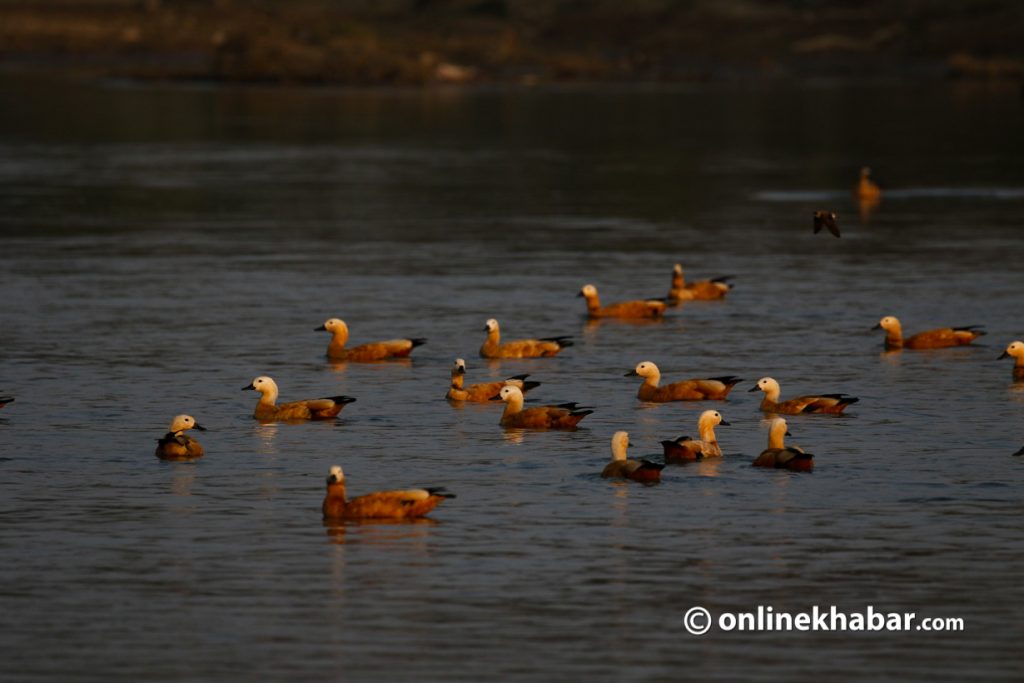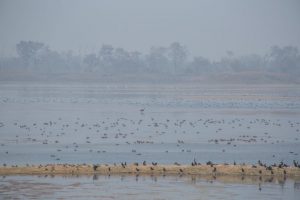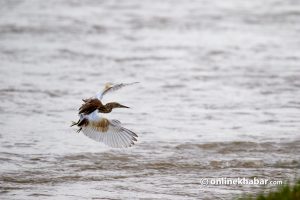It has been a few years that conservationists and stakeholders have been speaking about the diminishing state of wetlands in Nepal. They observe being a country that is rich in water resources has not helped Nepal overcome the threats, protect the wetlands or stride towards a better future. As the world celebrates World Wetlands Day and 51st anniversary of the Convention on Wetlands in Ramsar, Iran, conservationists say there is so much more to do for wetlands in Nepal.
Of the global wetlands, over 90 per cent have been degraded since the 1700s. The condition of wetlands in Nepal is not different either as they have been degrading for various reasons. For now, Nepal has over 5 per cent of wetlands, but the future is in limbo. One of the indications that the threat against wetlands in Nepal has been out of control is the gradually decreasing number of birds, both migratory and resident ones.
Big worries for birds
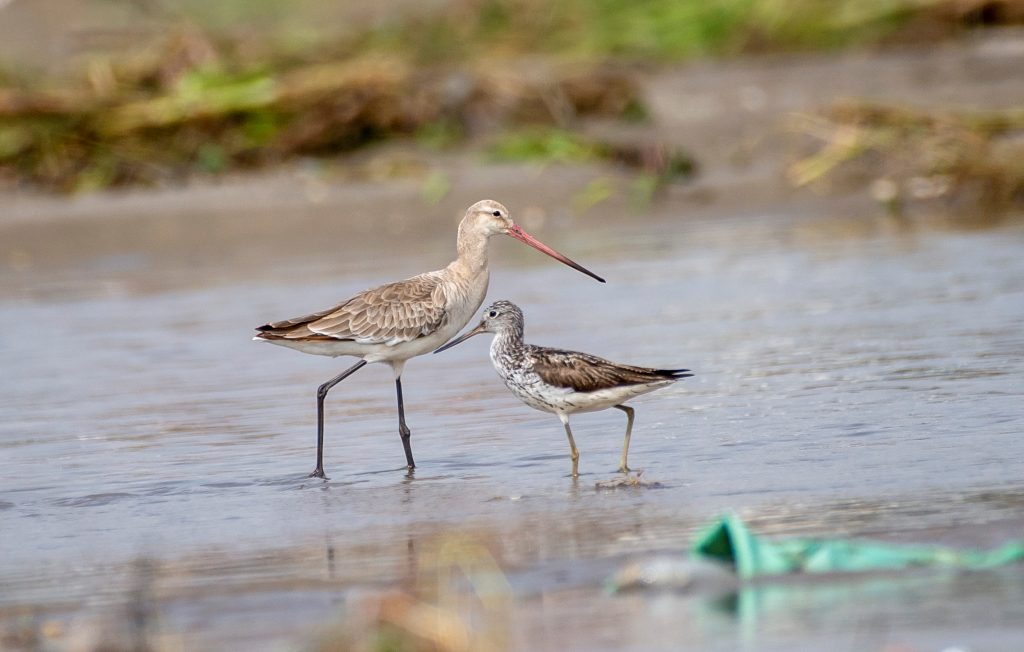
Wetlands in Nepal have been a haven for birds. Every year, tens and thousands of migratory birds reach Nepal in search of food and for breeding purposes. But, in recent years, the country has been seeing a decline in the overall number of birds.
According to Hem Sagar Baral, a senior ornithologist, any water body plays an important role in the birds’ ecosystem. “There are about 900 species of birds, out of which 200 are wetland birds and 150 are waterbirds. Of the 150, more than half are migratory birds. They take shelter and find food in and around water bodies helping the ecosystem boost.” He highlights, “Any degradation in the quality or quantity of the wetlands in Nepal directly impacts the birds. We have seen many such signs including a decline in bird numbers.”
Nepal started doing an annual bird census in 1987. “On a yearly census, some sites might report more birds whereas others might report less. But, overall, in the past 10 years, there has been a decline in the number of birds,” inform Juddha Bahadur Gurung, a member of the National Natural Resources and Fiscal Commission.
“In Nepal, we now see a constant 60,000 birds annually. But since the 1990s, Koshi Tappu has been the biggest loser. At its peak saw some 15,000 birds in one flock. Now, even with systematic counting, we see only 10,000. The resident birds are also in decline there,” Baral informs, “On the other hand, the biggest gainer is Jagadishpur, one of the most important wetlands in Nepal. At its peak, we saw 23,000 birds, but now, we see about 9,000. It has been constant, which is good, but the declining trend is worrisome,” Baral informs.
“At one time, about 100s of Eurasian curlew could be seen while seeing one in 10 years is a matter of excitement now. Black-bellied terns and river terns that were once seen in a number of some 50-60s are now just five or six. So, the situation has been dire,” stresses Baral, highlighting the need to conserve wetlands in Nepal.
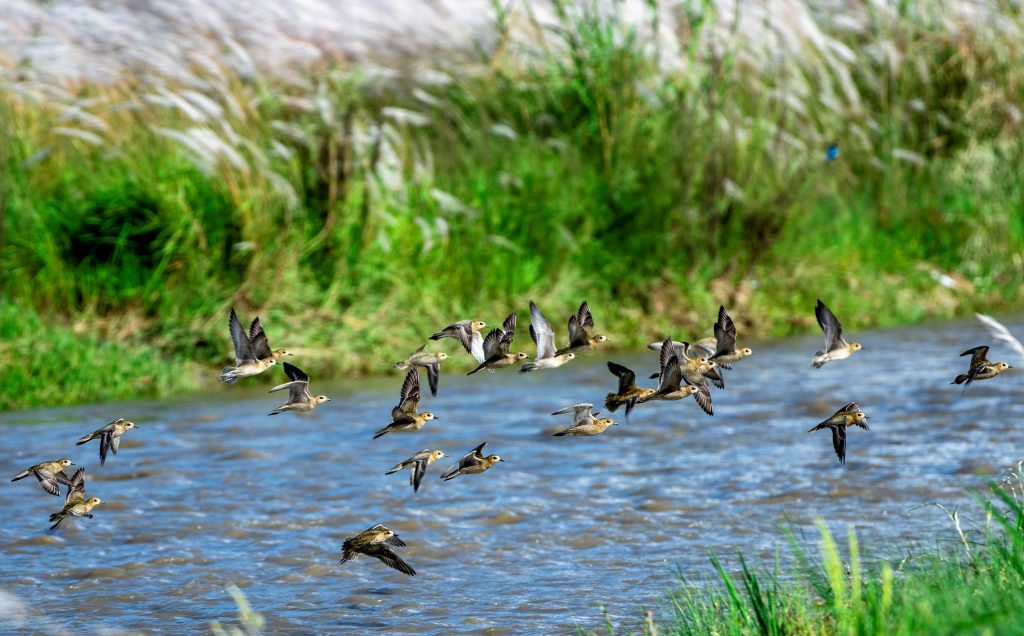
Serious threats
The decline in the number of birds is thanks to many threats that have been looming around wetlands in Nepal and elsewhere. Some threats are nation-bound whereas many factors are also affected by different global factors, says Baral. In this, climate change and its impacts have a big role to play.
“Many birds we see in Nepal are migratory, which means they stop all over the world year-round. So the degrading quality or quantity of wetlands anywhere in their route can affect their presence in Nepal.”
Another ornithologist Krishna Prasad Bhusal adds, “The loss of wetlands in Nepal–in number or size–and the human interventions have been the cause. Acts like sedimentation, poaching and hunting of birds and haphazard land-grabbing or plotting have posed a grave threat.”
He adds that building large infrastructures, use of concrete and commercialisation around the wetlands in Nepal have also increased the threat. “Bird species we see around the wetlands are not just water-dependent, eating fish or smaller organisms in the water. Many also go food hunting in nearby forests or fields,” he explains, “But, with urbanisation, there are houses instead of fields or forests, cottages surrounding the hills and constant noise and light pollution, all interfering with the birds’ behaviour or habitat. If we threaten their habitat, the number is sure to drop further.”
Baral says wetlands in Siberia, China and Mongolia that act as breeding centres and stops also are facing the same kind of problems.
“We are using wetlands in Nepal as a recreational spot for boating, picnics, view towers, and we are getting near the fish like in Taudaha. The surrounding areas are all concrete, intercepting other biological ecosystems of other species,” says Bhusal.
The degrading quality of the wetlands in Nepal is another issue. “Wetlands can dry up and ecosystems change locations naturally too. But, human intervention has polluted the ecosystem–with the dumping of plastic and sewage, and use of insecticides,” says Gurung.
Weak governance

Apart from that, the coordination gap between the three government levels and the lack of policy implementation have been degrading the status of wetlands in Nepal. “Our policies are very well drafted but not implemented. Neither have any management policies or action plans drafted been followed. So it is natural for the gap to be there,” shares Gurung.
Research about wetlands in Nepal is also minimal. Lack of research can be seen during infrastructural development in accordance with the wetlands. Meanwhile, the Wetlands Act is yet to be formulated.
“We do not have a single governing body. As many wetlands and Ramsar sites are within the areas of the national parks, the wetlands in Nepal are monitored by the Department of National Parks and Wildlife Conservation (DNPWC). But, not all local governments, government divisions and departments have been held responsible or been active to preserve and maintain wetlands,” says Gurung.
Baral and Gurung underline the bureaucracy is not aware of the importance of wetlands. “The new political system is still adapting to the changes. Any development or lack thereof has been credited to the local leadership than the policies,” hopes Baral.
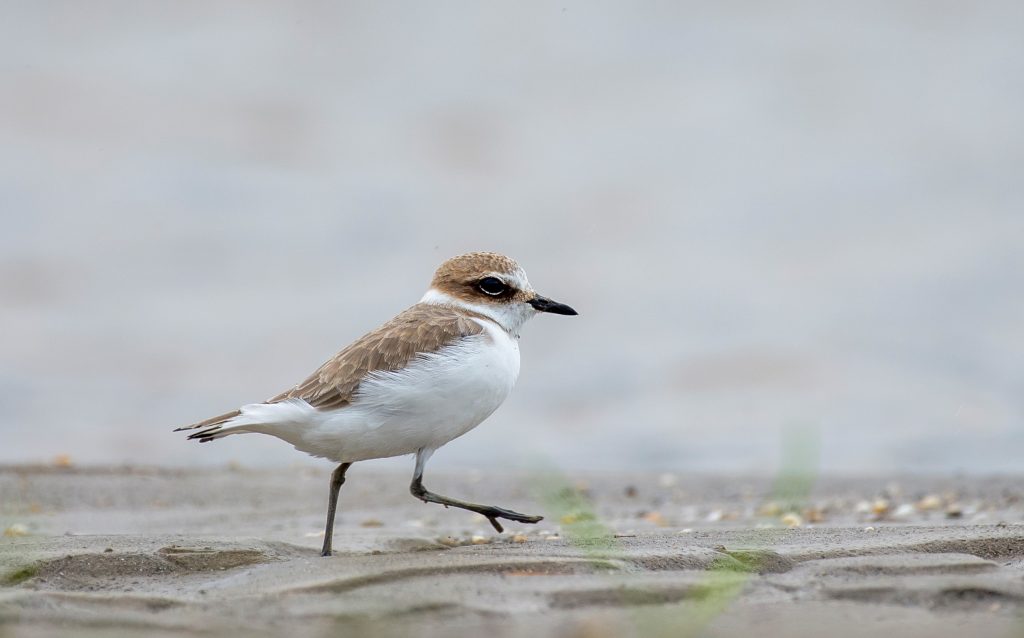
Can increasing the number of wetlands in Nepal be a solution?
Nepal, being a rich country in water resources, has an ample number of wetlands including rivers, lakes, ponds, swamps, etc. Wetlands are very essential not just to birds but to human civilization too, naturally, socially, culturally, spiritually and psychologically. So can increasing the number of wetlands in Nepal solve the pressing issues?
“Many local units have shown initiatives and set up wetlands in their areas, mainly for irrigation purposes. But, these areas [like Jagadishpur] have fostered new ecological systems,” informs Gurung.
On the other hand, Bhusal says, “More than increasing the number of wetlands, a more important issue is that they are being made for commercial purposes only. Meanwhile, commercialising has become problematic as it has overlooked the ecological balance and brought humans close to wetlands.”
But, Gurung defends commercialisation is necessary. “If we fail to join wetlands areas to economic factors, the sustainability can be questioned too. Wetlands in Nepal are being taken as the quickest way for local units to get their revenue, so many wetlands have been set up for such purposes. So it is crucial that we give some economic benefits to the locals if we want them to participate.”
Bhusal accepts the concept but says there needs to be some distance. “By creating a distance, we can enjoy nature and let nature foster itself without human intervention.”

Meanwhile, Nepal is also constantly trying to increase the number of Ramsar sites. So far Nepal has 10 Ramsar sites, but according to the National Ramsar Strategy and Action Plan [2018-2024], by the end of 2024 Nepal aims to declare up to 20 Ramsar sites. According to the conservationists, Tilicho and Damodar Kunda are in the process of getting enlisted.
Again, the question is: does Nepal need that many Ramsar sites?
Some argue that there is a need for more wetlands in Nepal to get listed as Ramsar areas. So far, there has been no river enlisted in the Ramsar sites while it continues to be encroached and polluted by human interventions.
Meanwhile, Baral says the country is already at its optimum level. “There are many wetlands to foster wetland-dependent birds. Nepal has a few high-altitude wetlands with unique ecosystems. They are enough for Nepal to qualify and declare more Ramsar sites.”



